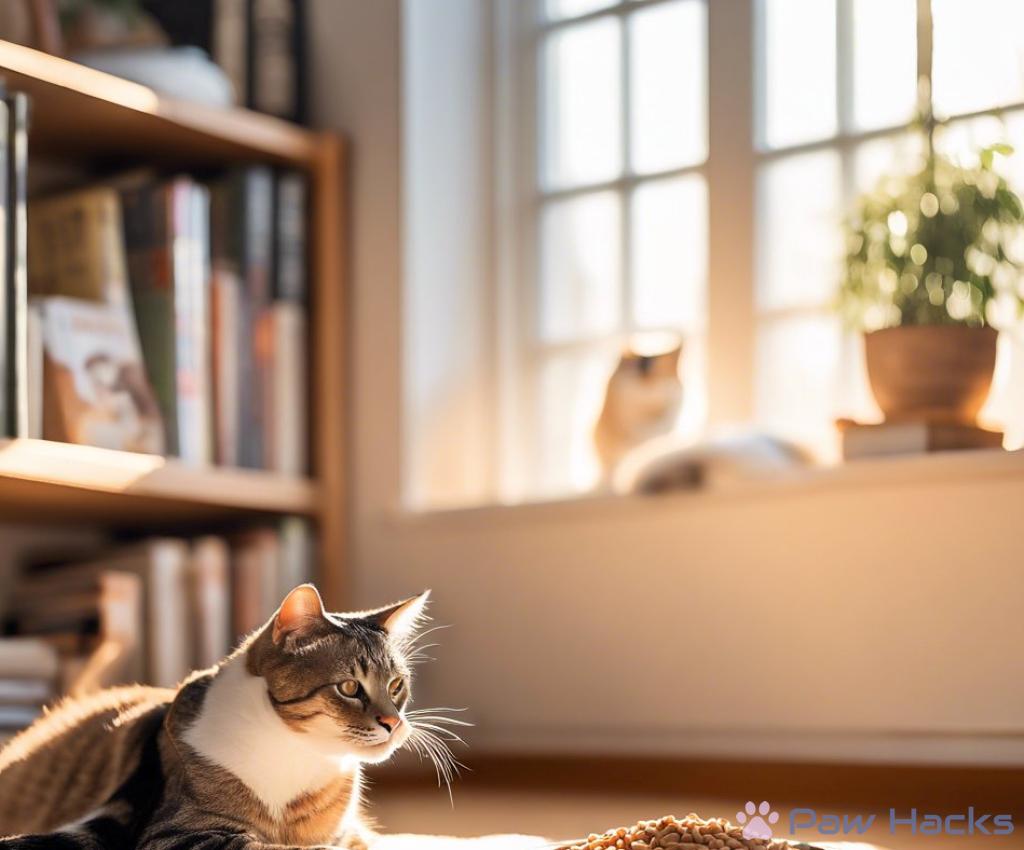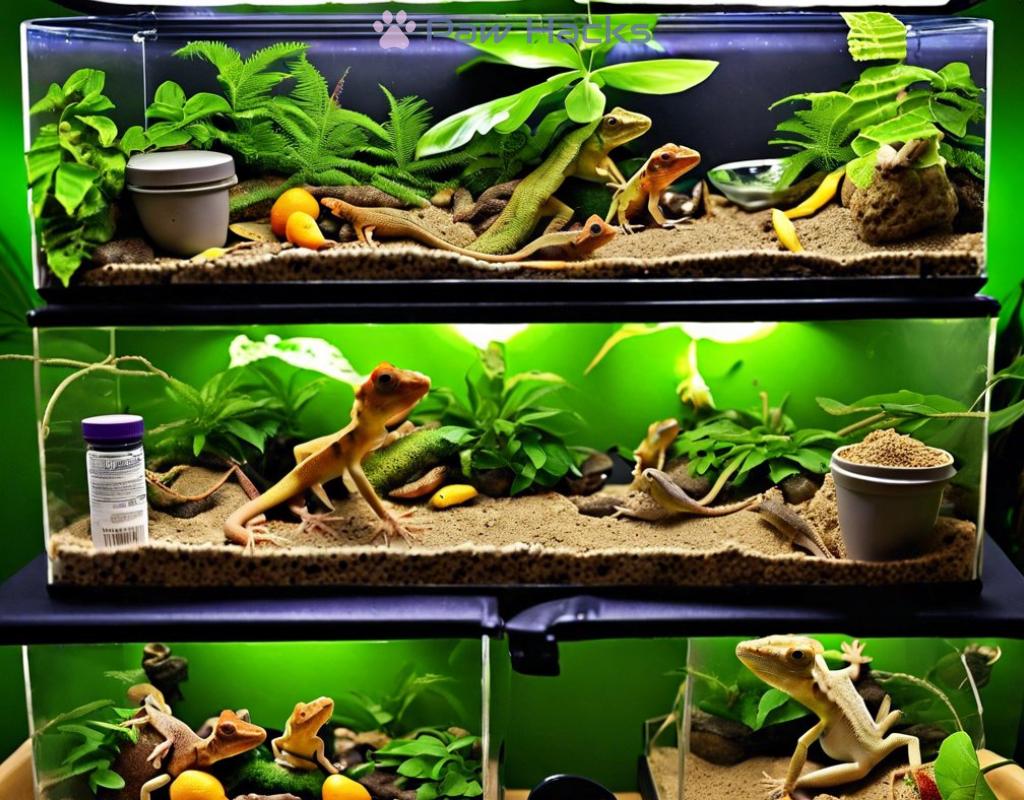Nutritional Management of Feline IBD
Understanding Feline IBD: What You Need to Know

Feline Inflammatory Bowel Disease (IBD) is a common gastrointestinal condition in cats that can lead to chronic vomiting, diarrhea, and weight loss. Understanding this condition is crucial for pet owners, as it significantly affects a cat’s quality of life. IBD occurs when the immune system reacts excessively to dietary components or intestinal bacteria, causing inflammation in the gastrointestinal tract. This inflammation can interfere with nutrient absorption and digestion, leading to various health issues.
Identifying the signs of IBD early can make a substantial difference in your cat’s treatment and recovery. Here are the most common symptoms to watch for:
- Chronic vomiting
- Diarrhea
- Weight loss
- Decreased appetite
- Lethargy
If your cat exhibits any of these symptoms, it’s essential to consult a veterinarian for a proper diagnosis and treatment plan.
Nutrition plays a vital role in managing Feline IBD. A carefully tailored diet can help minimize inflammation and improve your cat’s overall health. Here are some effective nutritional strategies:
- High-Quality Protein: Use easily digestible protein sources such as chicken or fish to support muscle maintenance and recovery.
- Limited Ingredient Diets: These diets reduce the number of potential allergens and irritants, helping to identify and avoid triggers.
- Increased Fiber: Adding fiber can help regulate bowel movements and improve gut health. Consider incorporating pumpkin or specialized fiber supplements.
Always consult your veterinarian before making any significant dietary changes to ensure that they align with your cat’s specific health needs.
Choosing the Right Diet: Key Nutritional Strategies for Cats with IBD
When managing Feline IBD, it’s essential to remember that every cat is unique, and their dietary requirements can vary significantly. Finding the right diet involves careful consideration of ingredients that not only cater to their specific health needs but also promote overall well-being. The right dietary approach can help mitigate the symptoms of IBD and enhance your cat’s quality of life.
Veterinary Guidance is crucial in this process. A veterinarian can recommend a suitable dietary plan based on your cat’s specific condition, age, and lifestyle, helping to identify any food sensitivities or allergies that may exist.
Specialized diets designed for cats with IBD focus on providing balanced nutrition while minimizing harmful ingredients. These diets often include hydrolyzed proteins that break down allergens, making them less likely to provoke an immune response. Additionally, prescription diets available at veterinary clinics are formulated to address the unique challenges presented by IBD.
Another effective approach is the use of probiotics and prebiotics. These beneficial bacteria can help restore the natural balance of gut flora, thereby promoting better digestion and nutrient absorption. Incorporating these elements into your cat’s diet can potentially lead to significant improvements in their condition.
Ingredient quality cannot be overstated. Look for diets that prioritize high-quality, whole food ingredients and avoid fillers and artificial additives. Cats with IBD often benefit from diets rich in omega-3 fatty acids, which possess anti-inflammatory properties. These can be found in fish oils or specialized supplements.
It’s essential to monitor your cat’s response to dietary changes closely. Keep a detailed journal of any symptoms, food intake, and behavioral changes to discuss with your veterinarian during follow-up visits. This record can help in fine-tuning the dietary strategy to better suit your cat’s evolving needs.
The Role of Supplements: Enhancing Your Cat’s Nutritional Intake
When managing Feline Inflammatory Bowel Disease (IBD), it’s not just about the primary diet; supplements can play a pivotal role in enhancing your cat’s nutritional intake. These additional nutrients can address specific deficiencies and support overall gastrointestinal health. Incorporating the right supplements may lead to improved digestion, better nutrient absorption, and a reduction in inflammatory responses. Selecting appropriate supplements requires careful consideration, as not every product on the market will meet your cat’s unique needs.
Among the various supplements available, omega-3 fatty acids are often highlighted for their powerful anti-inflammatory properties. These fatty acids, commonly found in fish oil, can help reduce inflammation in the gut, thereby alleviating some symptoms associated with IBD. Another beneficial addition is probiotics, which can help restore and maintain a healthy gut flora, promoting better digestion and overall health. Additionally, digestive enzymes can aid in breaking down food particles, making it easier for your cat to absorb essential nutrients.
It’s important to remember that the effectiveness of supplements can vary based on individual health conditions and dietary needs. Working closely with your veterinarian will ensure that the chosen supplements align with your cat’s specific requirements. A tailored approach not only maximizes the benefits of these products but also minimizes any potential risks associated with improper supplementation.
Once you introduce supplements into your cat’s nutritional plan, close monitoring is crucial. Keep an eye on any changes in your cat’s symptoms, behavior, and overall health. Documenting these observations can provide valuable insights to share with your veterinarian, helping to fine-tune the supplementation strategy as needed. Knowing when to adjust dosages or even discontinue certain products is an essential part of effective nutritional management. Regular veterinary check-ups will further ensure that your cat’s dietary and supplementary needs are being met effectively. Remember, the goal is to create a balanced approach that promotes healing and enhances your cat’s quality of life.
Identifying Food Triggers: How to Manage Your Cat’s Diet Effectively
Managing Feline Inflammatory Bowel Disease (IBD) involves more than just selecting the right primary diet; it requires a keen understanding of your cat’s unique sensitivities. Identifying food triggers is a crucial step in this process, as specific ingredients can exacerbate symptoms and hinder recovery. By recognizing these triggers, you can create a more tailored and effective dietary plan that supports your cat’s health and well-being.
Observing your cat’s behavior and health in relation to their diet is essential for identifying food triggers. Symptoms such as vomiting, diarrhea, and lethargy can often indicate a negative reaction to certain foods. Keeping a detailed food diary can be invaluable in this process. Documenting what your cat eats along with any symptoms that arise allows you to identify patterns and correlations more effectively. By scrutinizing this data, you can pinpoint specific ingredients that may be problematic.
One of the most effective methods for identifying food triggers is conducting an elimination diet. This involves removing all potential allergens from your cat’s diet for a specified period, usually around 6-8 weeks. During this time, you should feed your cat a simple, limited ingredient diet that contains novel protein sources and carbohydrates that they have not previously consumed. After this period, you can gradually reintroduce one ingredient at a time while monitoring for any adverse reactions. This systematic approach allows you to determine which specific foods may be contributing to your cat’s IBD symptoms.
While managing dietary changes on your own can be effective, consulting with a veterinarian provides an essential layer of support. They can offer expert insights into food sensitivities and recommend appropriate diets tailored to your cat’s specific needs. Additionally, a veterinarian can guide you through the elimination diet process, ensuring that it is conducted safely and effectively. This partnership is crucial, especially when it comes to maintaining a balanced nutritional intake, as your cat’s health relies on the right combination of nutrients.
Tailoring Meal Plans: Creating a Personalized Nutrition Guide for IBD Cats
When it comes to managing Feline Inflammatory Bowel Disease (IBD), one size certainly does not fit all. Every cat has its own unique set of dietary requirements that can greatly influence their health and well-being. Tailoring meal plans to suit these individual needs is vital for effectively managing the symptoms of IBD. This personalized approach involves careful consideration of your cat’s age, weight, activity level, and specific sensitivities to certain ingredients.
Creating a personalized nutrition guide requires a combination of knowledge and careful planning. Below are key components to consider when developing a meal plan for your cat:
- Protein Sources: Select high-quality, digestible proteins that your cat enjoys and can tolerate.
- Carbohydrate Choices: Incorporate easily digestible carbohydrates, such as rice or sweet potatoes, while avoiding common allergens.
- Fats and Oils: Include omega-3 fatty acids from fish oil to help combat inflammation.
- Supplementation: Add probiotics and digestive enzymes to improve gut health and nutrient absorption.
By thoughtfully selecting these components, you can create a balanced diet that supports your cat’s recovery and overall health.
Once you have established a tailored meal plan, the next step is implementation. Here are some practical tips to effectively introduce the new diet:
- Transition Gradually: Slowly introduce the new diet over a week to avoid digestive upset. Start by mixing a small amount of the new food with the current diet and gradually increase the proportion.
- Monitor Health: Keep a close eye on your cat’s symptoms and overall behavior during the transition. Document any changes to share with your veterinarian.
- Reassess Regularly: Periodically review the meal plan with your veterinarian, adjusting as necessary based on your cat’s response and any new symptoms that may arise.
By following these steps, you can ensure a smoother transition to a diet that is better suited for managing Feline IBD.
Share this content:



